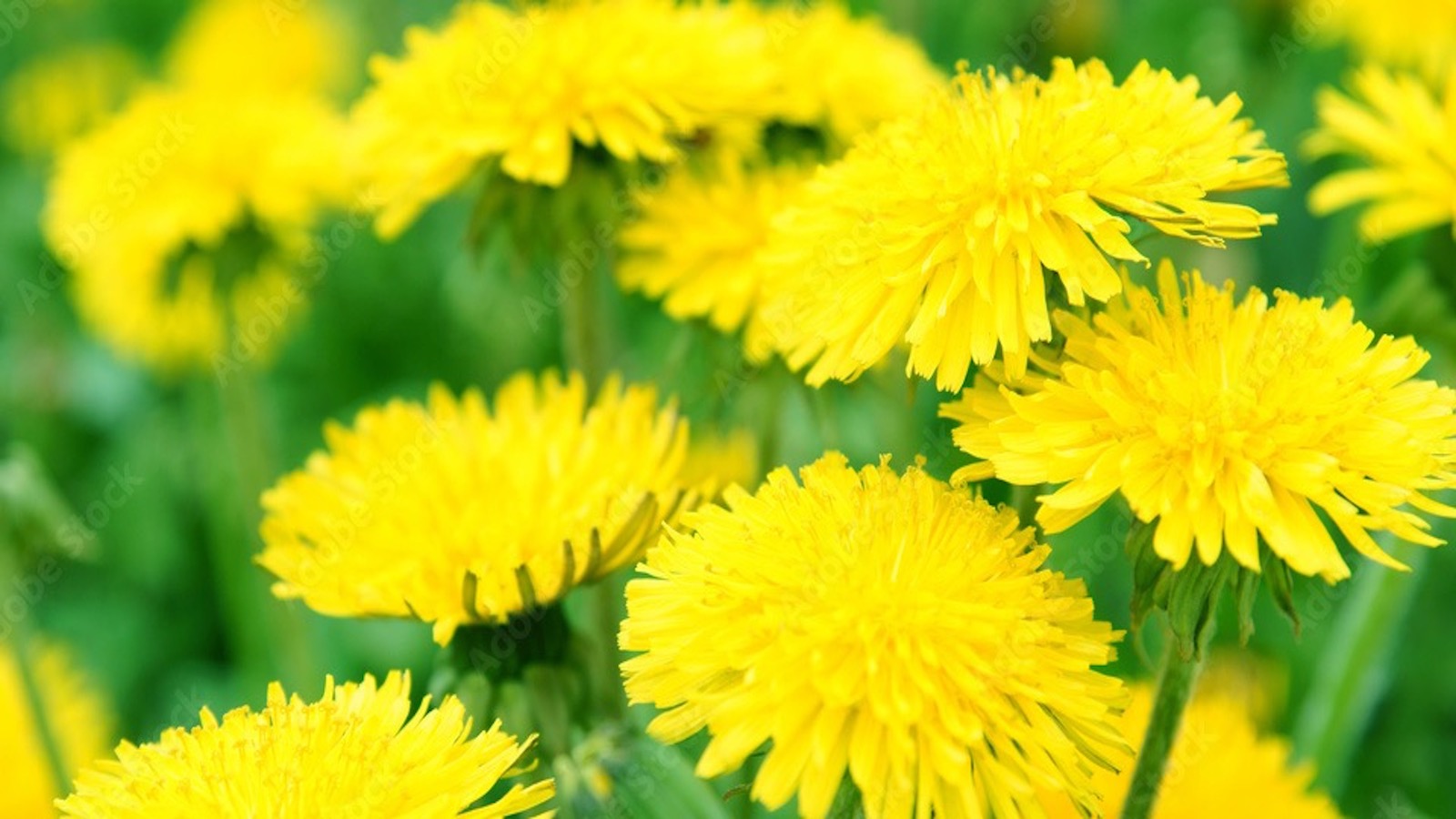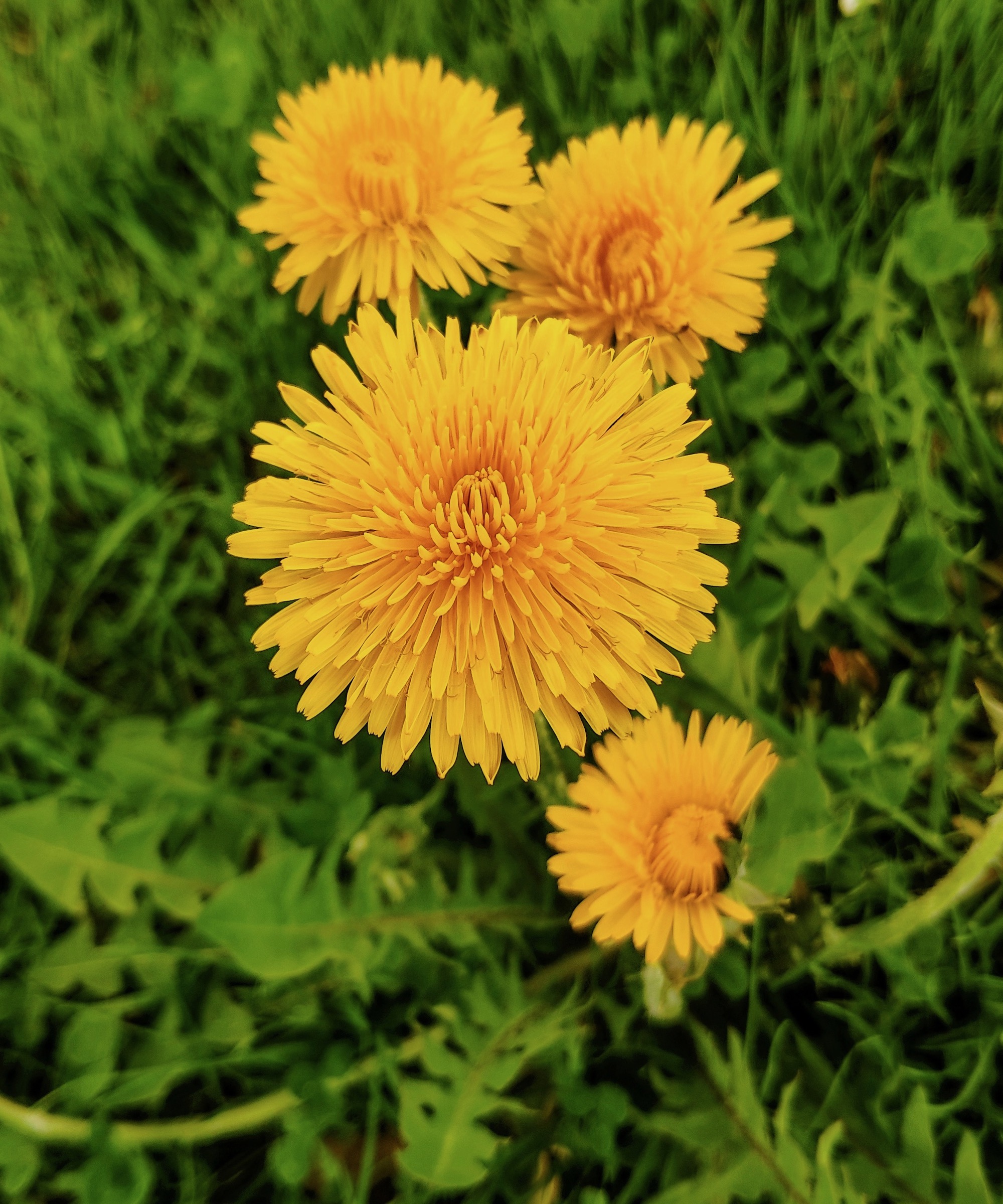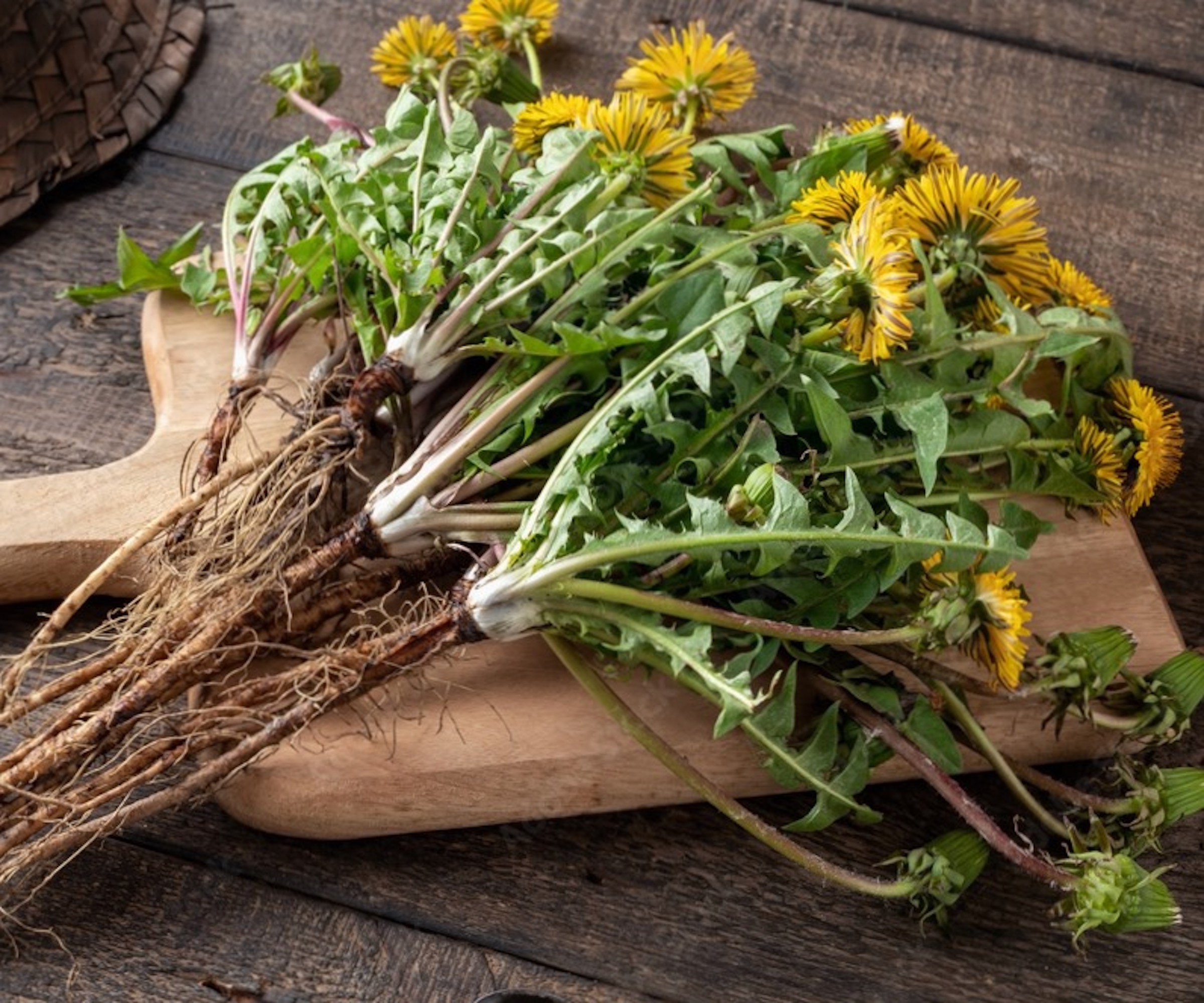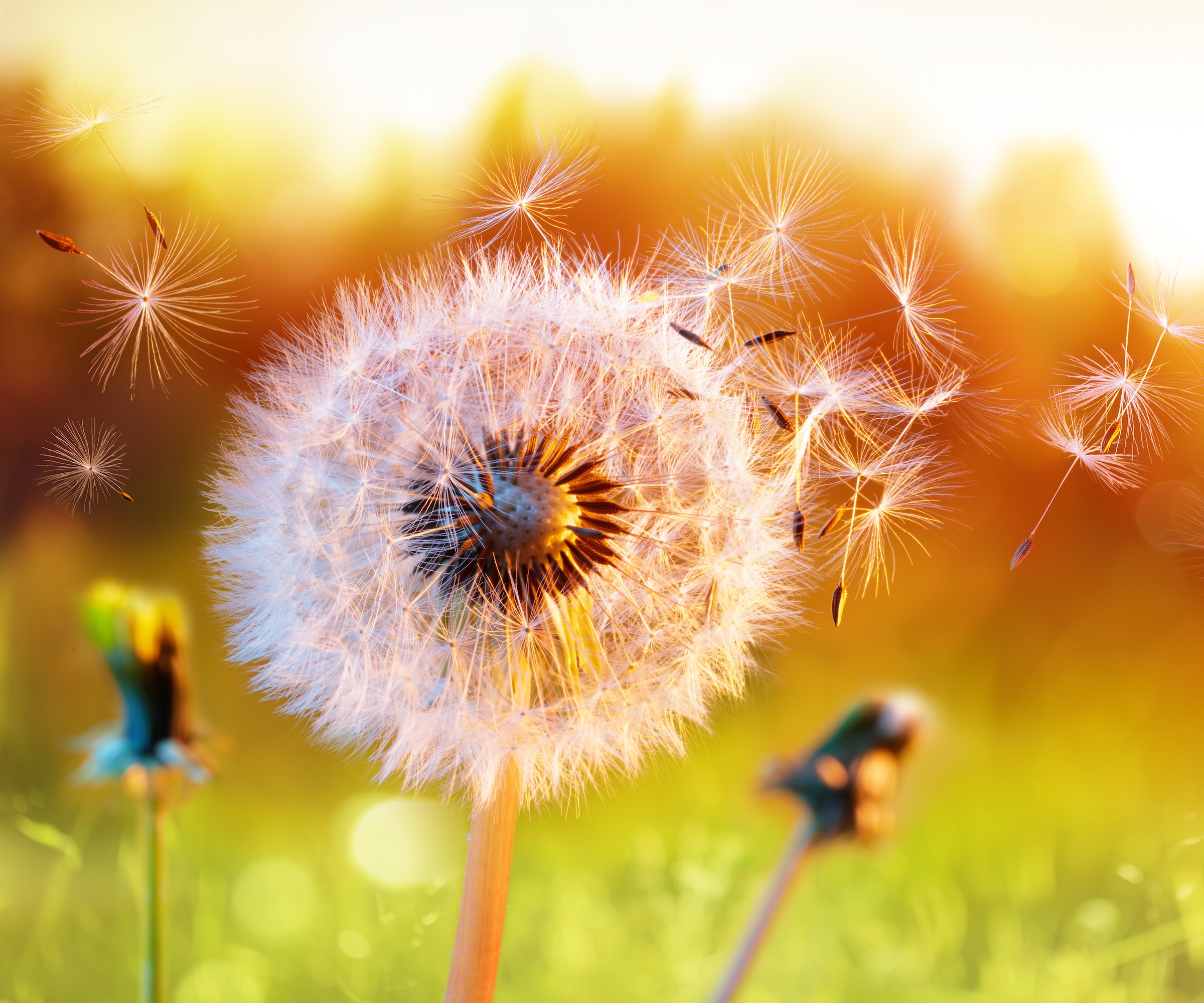Don't dismiss this prolific plant as an irritating weed – it's actually a climate resilient, secret superfood packed with health-boosting nutrients
Discover how to grow dandelion greens for food, with advice from expert growers


Dandelions can be considered a menace by gardeners as they erupt through lawns and emerge from the joins in pathway slabs and tiles. But did you know these often misunderstood weeds are actually worth deliberately cultivating as a secret superfood, packed with vitamins and minerals.
Members of the Asteraceae family, along with sunflowers and daisies and part of the same subfamily and tribe as lettuce, dandelions have been used in traditional medicine for centuries. And with the roots, leaves and brightly colored heads all being edible, they can be a real boon to grow-your-own gardeners planning vegetable beds or kitchen gardens, rather than being dug up and discarded.
However, we all know too well dandelions are prolific self seeders, which can lead to them appearing all over your yard and leave you wondering how to get rid of them. We talk to gardening and foraging experts about how to cultivate them deliberately and keep them contained in the areas where you want them to grow.
Why dandelions are more than a weed

The gardener’s dismissal of dandelions may be a problem of perception, according to Colleen Codekas, the Vermont-based creator of the site Grow Forage Cook Ferment.
‘Dandelions are the perfect example of an edible weed that people often try to get rid of, even using harmful chemicals to do so. But they often don’t know how wellness-supporting dandelions are.
'They are a perennial herb with a long list of culinary and medicinal uses. Studies show they’re rich in phenolic compounds, which can help reduce the risk of heart disease. They can benefit the body in other ways, including potential inflammation reduction, liver health, and digestion support. They are also delicious.
‘I say let them grow in your grass and wherever they may seed. The closer they are to your door, the better.’
Design expertise in your inbox – from inspiring decorating ideas and beautiful celebrity homes to practical gardening advice and shopping round-ups.

Colleen has been studying plants, herbs, and flowers for more than 20 years. Having worked in Yosemite National Park for 10 years, she and her family now live in Vermont, where she forages for and grows edible and medicinal plants and runs the blog Grow Forage Cook Ferment.
An asset to vegetable beds

It is the dandelions ability to grow in abundance in almost any conditions that could make them so useful to gardener’s interested in nurturing their own vegetables, fruit and herbs.
‘Cultivating dandelion greens for food is one of the easiest, most rewarding things you can do in a garden,’ says Loren Taylor, an experienced landscaper and owner of Outdoor Fountain Pros. ‘They don’t demand much, and they give back a lot, both in flavor and in nutrition.
‘They deserve a place in more gardens, especially those designed with edible landscaping in mind. They’re incredibly hardy, adapt well to different soil types, and don’t need constant attention. You can either directly sow the seeds (such as Heirloom Dandelion Seeds from Amazon), early in the spring or try again toward the end of summer if you want a second round of greens.
‘I’ve had clients sprinkle seeds at the edges of raised beds or around ornamental herbs – they fill in the space with bright green rosettes that look great even before they bloom.’
From a health perspective, dandelion greens are a good source of vitamins A, C, and K, as well as having smaller amounts of vitamin E, folate, and some B vitamins. They are packed with minerals such as iron, calcium, magnesium, and potassium, and the antioxidants beta-carotene and polyphenols. The roots have inulin, a natural soluble fiber.

Loren is a seasoned expert in landscaping and gardening, helping to transform exterior spaces through Outdoor Fountain Pros. He has a deep knowledge of plant species, soil conditions and sustainable practices, and an innovative approach to garden design.
Where to grow dandelions
‘Dandelions thrive in USDA zones 3–10,’ says horticulturist Samuel Davis, the CEO of a garden design company. ‘They’re frost hardy and able to overwinter in more moderate climates.
They have the ability to appear wild in the most barren of spots, even pushing their roots down through cracks in the sidewalk. But when purposefully grown, Samuel advises that they prefer ‘slightly acidic to neutral (pH 6.2-7.0) soil that is well drained, fertile and preferably compost enriched. They don’t like to be in saturated soil but will bolt in drought.’
No special equipment is required for planting, ‘just regular gardening tools. A garden hand tool set, like the Project Source kit from Lowe’s is ideal for growing in containers.
For planting in pots, you should select ones which are at least 8-10 inches deep as the taproot needs to grow downwards.’ This Yaheetech two-tier elevated planter box from Target gives plenty of room for a good crop.

Samuel is a horticulturist and CEO of London Gardeners, offering premier gardening services across the city, and fostering beautiful landscapes while nurturing a commitment to environmental stewardship.
When to harvest dandelion greens

‘Harvest young leaves in early spring or fall for best flavor as cooler weather cuts bitterness,’ says Samuel. ‘The flower heads are also edible, and the roots can be used in teas or tinctures.’
‘Growing up on the edge of a wooded lot in the Midwest, I remember my grandmother picking dandelion greens by hand every spring,’ recalls Loren. ‘She’d rinse them in a big metal bowl and toss them with oil, vinegar, and a pinch of salt.
'As a kid, I didn’t fully appreciate how special that simple salad was. After spending nearly two decades designing gardens and outdoor spaces, I’ve come to value those same greens as a useful part of sustainable landscaping.
'Timing is essential when it comes to harvesting. If you want the greens to taste their best, you need to pick them before the plant starts flowering. Once those sunny yellow blooms appear, the leaves begin to get more bitter. Young leaves, harvested early, are tender and perfect for fresh eating, and rich in vitamins.’
The leaves of dandelions grown in direct sunlight rather than shaded areas, can also be more bitter. To counteract this, it’s best if they are braised or blanched before eating, chopped small and mixed with other salad greens to dilute the strong flavor, or neutralised by the acidity of citrus or vinegar in a dressing or when sauteed.
Keeping dandelions contained

Because dandelions need little encouragement to grow practically anywhere, they have to be handled carefully when cultivating to make sure they don’t carpet your lawn or other beds.
‘Deadhead the flowers before they go to seed,’ advises Samuel. ‘And don’t compost plants when they have seed heads so they aren’t spread that way.
‘Try to grow them in pots or raised beds with root barriers. Done right, dandelions can be a sustainable, healthful option in your edible garden – not a life-regretting mistake.’
You can also be super diligent and use the dandelion vacuuming hack to suck up seed heads before they set seed in and around your yard.
In fact, dandelions are just one of many plants dismissed as weeds that are worth rebranding as something that can actually be more of a benefit to the yard than a blight.
Hopefully this has inspired you to go wild in your yard and embrace a more naturalistic and relaxed approach. Follow our guide to chaos gardening to read more about how to turn your outdoor space into a wilder, more naturalistic haven.

Alison is a contributing gardens writer for Homes & Gardens, writing on a range of topics from plant care to garden design. She has recently landscaped the outside space of her Victorian home, replacing crazy paving and cracked slabs with new lawn, and is currently cultivating a fruit bed.